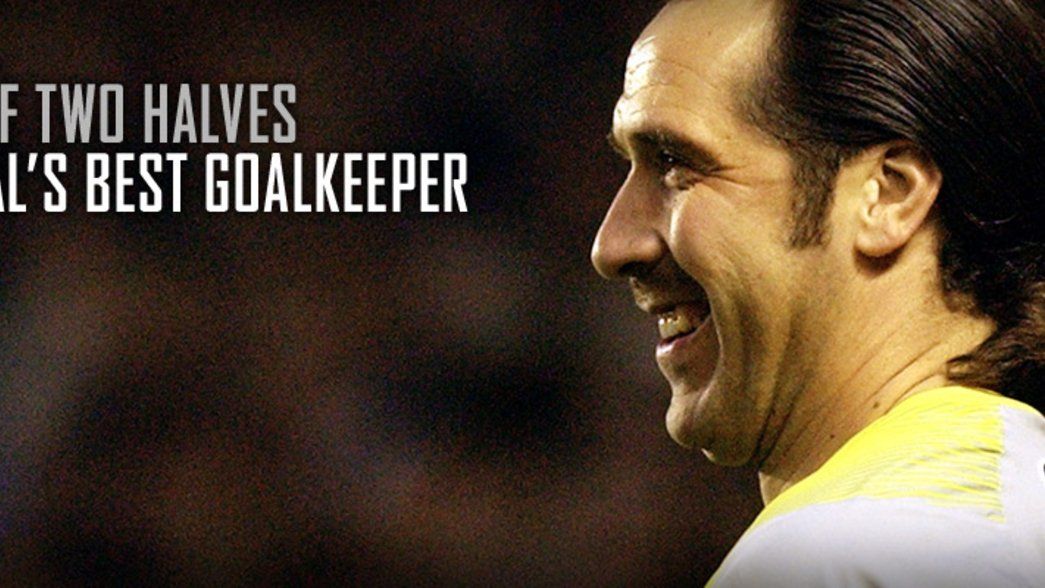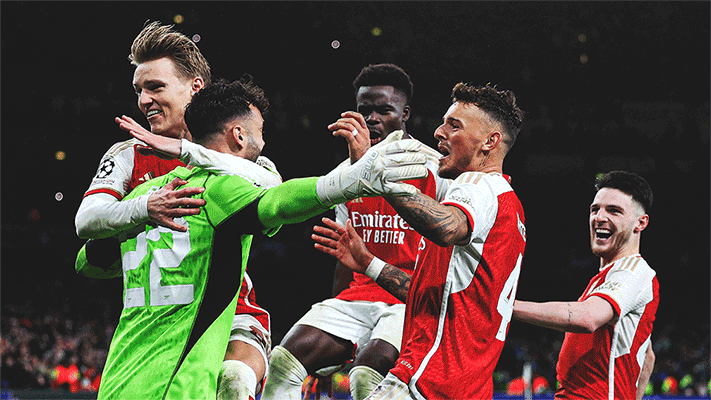This story first appeared in the April 2016 edition of the Arsenal Magazine.
SUBSCRIBE TO THE ARSENAL MAGAZINE

Mesut Ozil adorns the front cover of April's Arsenal Magazine
Former goalkeeper Rami Shaaban and Arsenal historian Mark Andrews address either side of this month's debate: Who is Arsenal’s greatest ever goalkeeper? This article first featured in the April issue of Arsenal Magazine.
RAMI SHAABAN
Former Arsenal goalkeeper, who played five times for the club between 2002 and 2004
I was at the club for two years and I was so privileged to be able to train with both David Seaman and Jens Lehmann, and also have Bob Wilson as goalkeeping coach. It was unbelievable for me to be here at that time.
I think I would probably rate David as the best for a variety of reasons. He was at the club for so many years and played a crucial part in helping Arsenal to win many trophies. Let’s not forget he was a lovely lad who I was able to get to know and learn from. He was amazing on the pitch and off the pitch. You just wanted him to be successful because of how humble and lovely he was.
David was like a mentor to me and I became a better goalkeeper through spending time with him. I really learnt how to prepare in the best possible way, how to make sure I was relaxed. He was always calm, always had a laugh and when I had the chance to play in big games - like against Tottenham at home - he gave you so much assurance.
Before I came to Arsenal, I was sometimes a bit tense, a bit nervous. Around David you couldn’t be like that. Jens Lehmann was the total opposite - an amazing goalkeeper but on a matchday, you could hardly talk to him. But he was so consistent. Jens and David had very different personalities but were both so successful and I tried to take as much from both of them as I could.
It was a perfect mixture. I came to the club in August 2002 and I made my debut a couple of months later. That meant that I was able to spend quite a lot of time with David before making my debut and I was able to see how he prepared for matches. We could be about to play a massive game and it wouldn’t affect him.

He was just so calm and always had a laugh. Even in training, he was so easy going. He always supported you and I learnt so much from that calm approach when I made my debut. I think that calmness played a major part in the success of Arsenal’s famous back five.
That, combined with the top-class qualities of the defenders in front of him formed a very solid spine. David had such ability, and nothing can sum up how good he was better than that save in the FA Cup final against Sheffield United. It was amazing. He saved a lot of games for us but even on the rare occasions where he conceded an easy goal, it didn’t bother him and we were able to turn the game around.
At the end of your career, you are remembered for what you won - and David certainly had a full trophy cabinet. He helped Arsenal to win so much and that’s what confirms him as my choice.
MARK ANDREWS
Arsenal historian, co-writer at www.thearsenalhistory.com
Ernest Clarke Williamson was the first goalkeeper to play for England while the club was at Highbury, and overall the second English international Arsenal ‘keeper after Jimmy Ashcroft. Williamson was the first in a very long line of top quality international Arsenal goalkeepers at Highbury; from Moss, Swindin, Kelsey, Wilson, Rimmer, Jennings, Seaman to Lehmann.
Williamson moved to Arsenal from Croydon Common just after World War I for £150, having played as a guest in 122 wartime matches for the Gunners. He made his competitive debut in the first top-flight game Arsenal played at Highbury and over the next few seasons appeared 113 times for the Gunners.

David Seaman and Arsene Wenger
Chosen for England he made two appearances on a tour of Sweden in 1923 just before moving to Norwich, and after he finished playing he ran a couple of pubs. He won no FA cup nor league medals while at the Arsenal as this was the pre-Chapman era, however one element marks him out as great which transcends his playing career.
That was his work with the St Dunstan’s blind servicemen between 1920 and 1923. Now called the Blind Veterans UK, the St Dunstan’s charity was set up in Regent’s Park during the Great War to care and provide services for approximately 3,000 soldiers, airmen and naval rankings who lost their sight while fighting for their country.
He would often play in goal in the football events organised by St Dunstan’s for blind veterans in their care at the Regent’s Park football pitches. These games, regularly played for the Sir Arthur Pearson Challenge Cup final, were made up of teams of blind players in a tournament.
There would be a sighted keeper and the Challenge Cup was usually a series of knockout penalty shoot-outs, with the ‘keeper clapping his hands to indicate his position. The men bought him an inscribed rose bowl as a token of their appreciation in 1921 as he had twice arranged for the whole Arsenal team to play blindfolded against eleven veterans at Regents Park.
Arsenal won 4-0 and 5-3. It is not recorded why he was so involved though he enlisted into the Footballers’ Battalion in December 1914, and no doubt came into contact with the seemingly endless misery of the awful conflict.
Williamson may well have been moved to assist after playing in the friendly against Spurs in May 1919, which the two clubs arranged to raise money for St Dunstan’s. EC Williamson: Arsenal’s first Highbury international keeper and a decent man too.

Copyright 2024 The Arsenal Football Club Limited. Permission to use quotations from this article is granted subject to appropriate credit being given to www.arsenal.com as the source.










